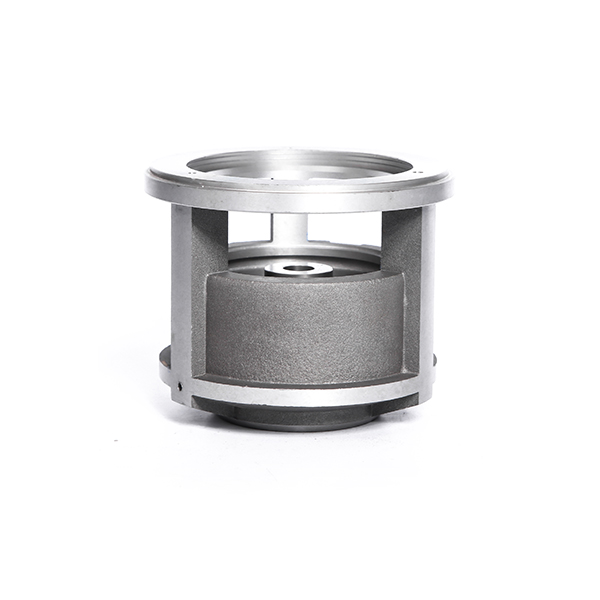Mobile:+86-311-808-126-83
Email:info@ydcastings.com
Bearing End Cap Design and Functionality for Enhanced Performance and Durability
Understanding Bearing End Caps Importance and Applications
In the world of engineering and machinery, bearings play a crucial role in ensuring the smooth operation of rotating components. Among the various components that contribute to the performance and reliability of bearings, the bearing end cap is often overlooked, yet it serves a vital function. This article delves into the significance, design considerations, and applications of bearing end caps.
What is a Bearing End Cap?
A bearing end cap is a component that covers the ends of a bearing, providing protection and support. It often consists of metal or plastic and is designed to fit tightly over the bearing's ends. The primary purpose of an end cap is to retain lubricant within the bearing while preventing the ingress of contaminants such as dirt, dust, and moisture. By sealing the bearing, end caps significantly extend the lifespan and efficiency of the bearing mechanism.
Importance of Bearing End Caps
1. Contamination Prevention One of the primary roles of bearing end caps is to protect the bearing from external contaminants. Any foreign particles that enter a bearing can lead to premature wear and failure. The end cap serves as a barrier against such contaminants, ensuring that the internal components remain clean and well-lubricated.
2. Lubrication Retention Proper lubrication is critical for reducing friction and wear in bearings. End caps help retain the lubricant within the bearing housing, keeping it in place and ensuring that the moving parts receive adequate lubrication. This is especially important in applications that involve high speeds or heavy loads.
3. Structural Support Bearing end caps also provide structural support to the bearing assembly. They help maintain the alignment of the bearing and ensure that the loads are distributed evenly. This alignment is essential for optimal performance and can prevent misalignment-related issues that may arise during operation.
4. Ease of Maintenance Many bearing end caps feature designs that facilitate easy access for maintenance and inspection. Some are designed with removable features, allowing for quick cleaning or lubrication without disassembling the entire bearing assembly.
Design Considerations
When designing or selecting bearing end caps, several factors should be taken into account
bearing end cap

1. Material Selection The choice of material for an end cap can influence its durability, resistance to wear, and ability to withstand harsh environments. Common materials include various metals, plastic composites, and elastomers, each offering specific advantages based on application requirements.
2. Sealing Mechanisms The effectiveness of an end cap in preventing contamination and retaining lubrication depends on its sealing mechanisms. Manufacturers often incorporate gaskets or O-rings within the design to ensure a tight seal.
3. Size and Fit End caps must be precisely sized to fit the specific bearing type they will be used with. An improper fit can lead to ineffective sealing or mechanical failure.
4. Application Environment The operational environment plays a crucial role in end cap design. For instance, end caps used in high-temperature applications may require heat-resistant materials, while those used in wet or corrosive environments may need specialized coatings.
Applications of Bearing End Caps
Bearing end caps are used across a wide range of industries and applications, including
- Automotive In vehicles, bearings are used in wheel hubs, transmissions, and engines. End caps ensure that these bearings function optimally by protecting them from contaminants, which is particularly important in harsh driving conditions.
- Manufacturing Machinery in manufacturing facilities often relies on bearings for movement. End caps help maintain these bearings in top condition to reduce downtime and maintenance costs.
- Aerospace The aerospace industry demands high reliability and performance. Bearing end caps play an integral role in ensuring that aircraft components operate smoothly over extended periods.
- Robotics In robotic applications, precise movement is critical. Bearing end caps contribute to the longevity and accuracy of robotic joints and actuators.
In conclusion, while bearing end caps may seem like a minor component, their role in protecting bearings from contamination, retaining lubrication, providing structural support, and facilitating maintenance is pivotal. As the demand for high-performance machinery continues to grow, understanding and optimizing the design and application of bearing end caps will remain essential. Whether in automotive, manufacturing, aerospace, or robotics, these small components yield significant benefits, ensuring machinery operates smoothly and efficiently.
-
Why Should You Invest in Superior Pump Castings for Your Equipment?NewsJun.09,2025
-
Unlock Performance Potential with Stainless Impellers and Aluminum End CapsNewsJun.09,2025
-
Revolutionize Your Machinery with Superior Cast Iron and Aluminum ComponentsNewsJun.09,2025
-
Revolutionize Fluid Dynamics with Premium Pump ComponentsNewsJun.09,2025
-
Optimizing Industrial Systems with Essential Valve ComponentsNewsJun.09,2025
-
Elevate Grid Efficiency with High-Precision Power CastingsNewsJun.09,2025











